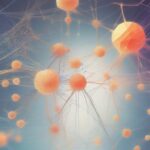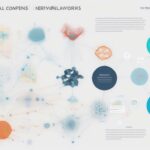In the rapidly evolving landscape of technology, terms like Artificial Intelligence (AI) and Machine Learning (ML) are often used interchangeably, leading to confusion regarding their true meanings. Understanding the distinctions between these concepts is crucial, particularly as they play increasingly significant roles in our personal and professional lives. This article aims to clarify the differences and how they interrelate within the broader realm of computer science.
Defining Artificial Intelligence
At its core, AI can be defined as the ability of a system to perform tasks that typically require human intelligence. This encompasses a wide range of capabilities, including reasoning, problem-solving, understanding language, and learning from experiences. AI aims to exceed or at least match human cognitive functions, leading to the development of systems that can discover new information, infer conclusions from available data, and even learn from patterns.
Capabilities of AI
The capabilities of AI can be broken down into several categories:
- Discovery: AI systems can find new insights or data through analysis.
- Inference: They can draw conclusions based on implicit information.
- Reasoning: AI can combine various pieces of information to reach new understandings.
This definition establishes AI not merely as a set of defined tasks but as a broader category that encompasses various methodologies, including machine learning.
Understanding Machine Learning
Machine Learning is a subset of AI, focused primarily on the ability of machines to learn and make predictions based on data. Unlike traditional programming, where explicit instructions are provided to achieve a specific outcome, machine learning involves algorithms that improve their performance as they are exposed to more data. This method allows systems to "learn" and adapt without being explicitly programmed for every possible scenario.
Types of Machine Learning
Machine learning can be categorized into two main types:
- Supervised Learning: In this approach, algorithms are trained using labeled data, where the desired output is known. Human oversight plays a critical role in guiding the model’s learning process.
- Unsupervised Learning: This method uses data without explicit labels, allowing the system to identify patterns and insights on its own, relying on the structure and correlations within the data.
Within machine learning is a specialized area known as Deep Learning, which employs neural networks to analyze data in layers, mimicking the human brain’s structure and function. Deep learning models can recognize patterns and make decisions; however, one of its challenges is the "black box" nature of many of these models, meaning the rationale behind their outputs can be difficult to interpret.
The Relationship Between AI and Machine Learning
Visually, one can represent the relationship between AI, ML, and Deep Learning through a Venn diagram. In this model:
- AI serves as the overarching superseding concept that includes various subsets like ML and Deep Learning.
- Machine Learning is thus a critical component of AI, contributing to its capabilities but not exhausting its full potential.
- Deep Learning is a further specialization within machine learning, adding depth and complexity to how algorithms process information.
Additional Components of AI
Beyond machine learning and deep learning, AI encompasses various other disciplines. For instance:
- Natural Language Processing (NLP): The capacity of machines to comprehend, interpret, and generate human language.
- Computer Vision: The ability for systems to interpret visual information from the world.
- Robotics: Integrating AI into physical systems, enabling them to perform tasks that require movement or manipulation.
These fields exemplify the multifaceted nature of AI, extending into areas that influence industries such as healthcare, finance, education, and entertainment.
Conclusion
Understanding the distinctions and relationships between AI and machine learning is fundamental in navigating today’s technological environment. While machine learning represents a pivotal aspect of AI, it is essential to recognize that AI encompasses a broader range of capabilities and methodologies. As AI continues to advance and integrate into daily operations, grasping these concepts will empower individuals and organizations alike to leverage technology effectively and responsibly. The journey to decode AI is ongoing, beckoning further exploration and understanding in this exciting frontier of innovation.



